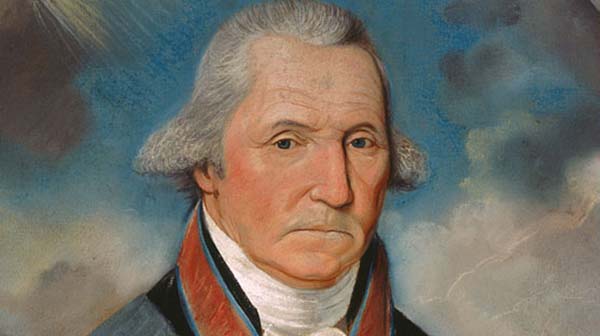With the people being gripped by his profound reputation, no one bothers to ask why George Washington looks dull in his famous portrait.
The people usually charge Washington’s dull appearance in his portrait as merely a part of projecting a state man’s image but studies discard this angle and point out something grounded and scientific.
George Washington’s Legacy
George Washington is known to be the first constitutional president of the United States of America. His role in the revolution and subsequent independence and formation of the United States became significant. He is seen by Americans as the “Father of Our Country.”
According to hagiographers, he is best remembered of his efforts in building a strong central government by paying off the national debt, implementing an effective tax system and creating a national bank. Washington kept away from war and sustained a decade of peace with other nations despite intense retorts of the opposition.
Emphasizing his iconic contributions and the American respect earned across times, it seems that no one makes fun of his portrait, if not no one really cares about the president’s more than serious portrait.
The Reveal on George Washington’s Dour Expression
Reader’s Digest’s June to July 2010 starts its feature on Washington, “No trees were chopped down in service of our first president’s mouth – although it is true that he suffered for years from dental pain.”
The article discloses that from the age of 24, Washington lost, on average, one tooth a year. By the time he was elected president of the United States, he had only one of his own teeth left.
According to an article entitled The Health and Medical History of President George Washington: Teeth and Denture, Washington had sets of dentures made from materials as hippopotamus ivory, seahorse ivory and lead. Other sets used the teeth of pigs, cows, elks and humans. He had also used sets of false teeth, one of which was from the University of Maryland Dental Museum in Baltimore.
Washington’s favorites were crafted from hand-carved hippopotamus ivory and gold where the upper and lower plates were pivoted with springs that held them in place when opened. “Washington had to bite down in order to keep his mouth closed. If he relaxed his jaw, his mouth would pop open.”
Father of Modern Dentistry, Dr. John Greenwood of New York City also produced several sets of dentures for the president, none of which involved wood.
Washington’s Peale Portrait
Hence, it is revealed that Washington’s awkward, non-fitted dentures changed his lips shape. This contributed to the dour expression Washington has in various portraits.
Further, painter Gilbert Stuart disliked Washington and accentuated the distortion in what became the most famous of all Washington portraits. The Peale portrait of 1776 shows a long scar along Washington’s left cheek. This resulted from an incision to treat an abscessed tooth.
Historian Richard Norton Smith writes, “according to John Adams, Washington lost his teeth as the result of cracking Brazil nuts between his jaws. By the time he became President, he had but a single tooth left and a set of dentures fashioned from cow’s teeth. In hopes of finding something better, Washington contacted a leading dentist in Philadelphia, who produced a state-of-the-art set carved, not from wood, but from hippopotamus tusk.”
“The new dentures were thoughtfully drilled with a hole to fit over his one remaining tooth. Unfortunately, they also rubbed against this natural tooth, causing more or less constant pain for which the President took pain-killer laudanum.”
Moreover, Washington also suffered serious and life-threatening infections including malaria, tuberculosis and diphtheria.
Washington’s Additional Legacy
Reader’s Digest tells that after the president’s death, one set of his dentures was donated to the University of Maryland Dental School. Another is on display at Mount Vernon.
“After the dental school loaned its set to the Smithsonian for its bicentennial display in 1976, it was stolen. In 1982, half was returned. The other half has not been seen since.”
The information revealed in the study did not contribute mortifying effects to Washington’s image. If considered a treasure of the past, history teachers may include this in their lesson plans as an interesting piece of trivia. One can substantially answer a curious kid’s query without having to impart speculations of no basis.








